Every so often I am going to post about one of the exercises that pops up in the Butcher Barbell Team Program and explain who, what, when, why and how to do the exercise. Very few, if any, of the exercises I include in the programming were invented by me, but I feel the need to explain them and why we have you perform them as part of the program. This post, we take a close look at the Deficit Snatch Pause Deadlift.
EQUIPMENT
Barbell and Weights
A riser (a board, 15kg plate or piece of stall matting can work)
Straps and other supportive equipment
SETUP
Set your feet on a 2” Riser. Grip the bar the bar with a snatch grip and assume your snatch starting position.
EXECUTION
First movement is to deadlift the bar to where the BOTTOM of the plates are level with the TOP of the riser you are set on. This position should be identical to your normal set-up without the riser. Butcher Barbell athletes know this position as simply Position 3. Shoulders should be directly over the bar, shins should be angled over the bar, and there should be a slight space between the barbell and the shin. Weight Should be balanced toward the midfoot/ball of the foot. Pause here for 2-3 Seconds.
Second movement is to sweep the bar back to the mid-knee position (Butcher Barbell athletes hear me call this Position 2). Your shoulders should be in advance of the bar, the shins should be perpendicular to the floor and the weight should shifted toward the heel with the foot still flat. Pause here for 2-3 Seconds.
The final transition on the way UP is to sweep the bar from the Mid-Knee (Position 2) into the Power Position (Position 1). The bar should be in the crease of the hips with the arms straight, the knees bent and the weight still favoring the heel of the foot. The Torso should be vertical with the shoulders behind the bar.
The second half of the movement is simply a reverse of the first 2 transitions and pauses. You will first lower the bar down the thigh to the Mid-Knee (Position 2) and then to Position 3, pausing at both positions for 2-3 seconds.
See Coach Jake Perform a demonstration of this exercise HERE
WHY
This exercise is all about refining and strengthening key positions in the pull. While you can pause and hold at any point, I use these positions in particular because they are the main transition points in the lift. Adding the pause also allows for time to make corrections at a position before proceeding to the next one.
WHO
All of my athletes will have this programmed at some point, but it is especially useful for beginners who are still learning the different positions of the pull and need to improve their ability to hit these positions in the pull.
WHEN
In the cycle, I typically program this movement in the first 4-8 weeks of a 12-16 week training cycle. I want to use this exercise to develop the strength and positional awareness to perform the pull correctly at full speed later in the cycle and closer to competition. In the workout, it is usually done after the classic lifts programmed for that day, as it is highly taxing but does not require the same agility, balance, power and coordination as a snatch. In order, this is usually the 3rd exercise for a workout.
Try the exercise for yourself for a few weeks or join the Butcher Barbell Team Program to see how we incorporate it into our program. This is one of the exercises we demonstrate and teach at all of our clinics and seminars. See below for information about joining the team or for our next Butcher Barbell clinic!
Stephen Butcher
Join the Butcher Barbell Team on TrainHeroic HERE
Sign up for our next Butcher Barbell Clinic HERE
